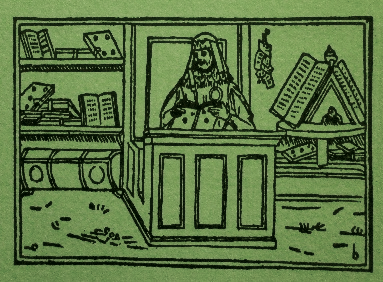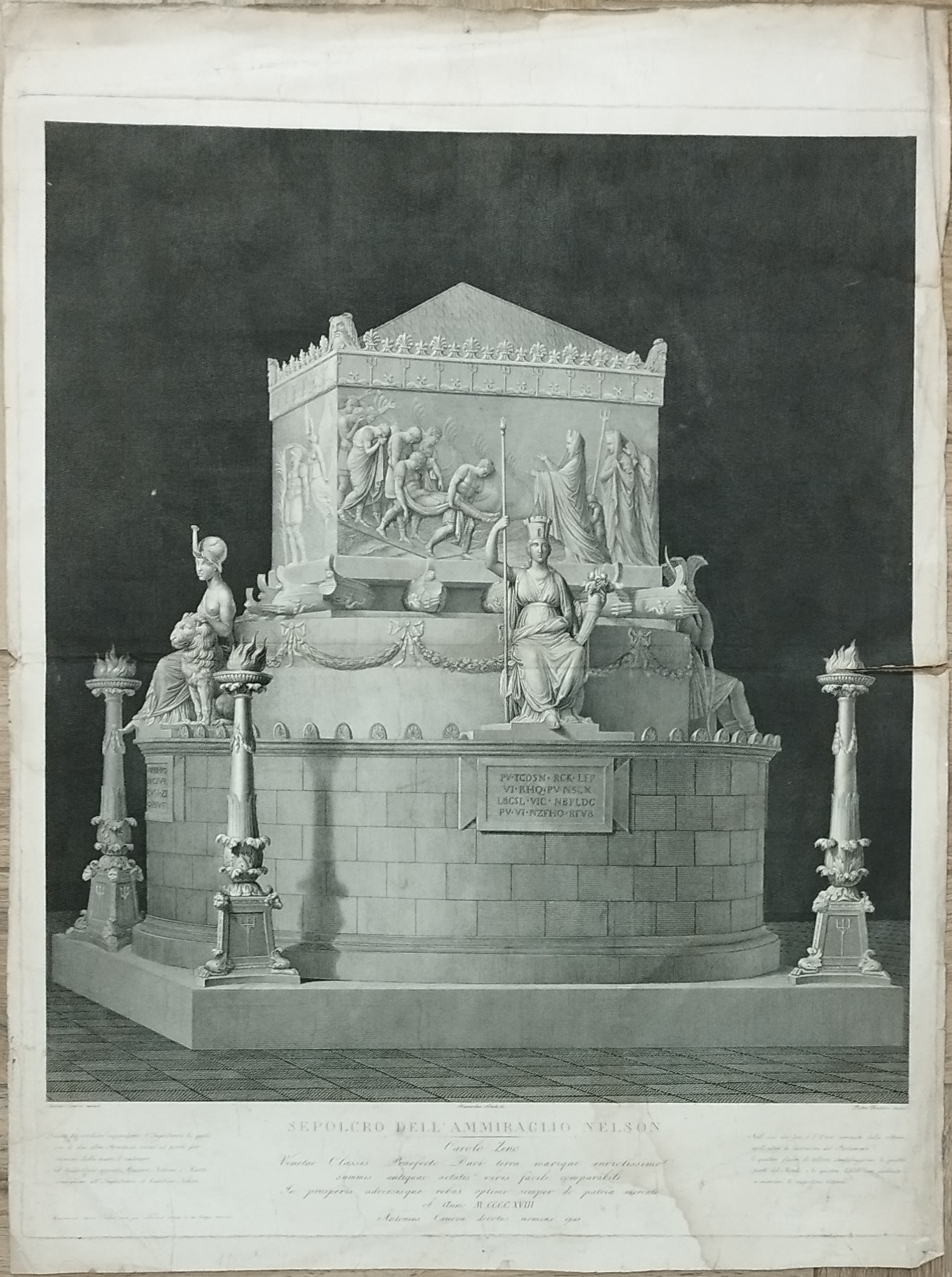Incisione al bulino e acquaforte di 631 x 771 mm alla battuta su foglio di cellulosa di 649 x 871. Strappo al margine destro di piegatura e piccolo foro nello sfondo nero; gora d’umidità all’angolo inferiore destro. Iscrizioni: in centro il titolo; sulla sinistra “Questo bassorilievo rappresenta l’Inghilterra la quale con le due altre Provincie viene al porto per ricevere dalla nave il cadavere. Nel bassorilievo opposto Minerva Nettuno e Marte consegnano all’Inghilterra il bambino Nelson”; al centro sotto il titolo “Carolo Zeno Venetae Classis Praefecto Duci terra marique invictissimo summis antiquae aetatis viris facile comparabili. In prosperis adversisque rebus optime semper de patria merenti ab Anno MCCCXVIII. Antonius Canova devotus nomini eius.”; sulla destra ” Nell’uno dei lati è l’Eroe coronato dalla vittoria, nell’altro la iscrizione del Parlamento. Le quattro figure di rilievo simboleggiano le quattro parti del Mondo, e le quattro lapidi son destinate a marcare le rispettive vittorie”. Questa non comune incisione fu probabilmente richiesta dallo stesso Canova, visto che sembra documentato che il grande scultore avesse dato un anticipo a Fontana per l’incisione dell’opera. (EN) Engraving and etching measuring 631 x 771 mm at the edge on cellulose sheet measuring 649 x 871. Tear on the right folding margin and small hole in the black background; Moisture stain in the lower right corner. Inscriptions: title in the centre; on the left “This bas-relief represents England which with the two other Provinces comes to the port to receive the corpse from the ship. In the opposite bas-relief Minerva, Neptune and Mars deliver the child Nelson to England”; in the center under the title “Carolo Zeno Venetae Classis Praefecto Duci terra marique invictissimo summis antiquae aetatis viris facile comparabili. In prosperis adversisque rebus opttime semper de patria merenti ab Anno MCCCXVIII. Antonius Canova devotus nomini eius.”; on the right “On one side is the Hero crowned by victory, on the other the inscription of the Parliament. The four relief figures symbolize the four parts of the World, and the four gravestones are intended to mark the respective victories”. This uncommon engraving was probably requested by Canova himself, given that it seems documented that the great sculptor had given an advance to Fontana for the engraving of the work.
Libreria Emiliana
Antiquaria
Libri e Stampe Veneziane
dal XV al XXI Secolo
dal XV al XXI Secolo


